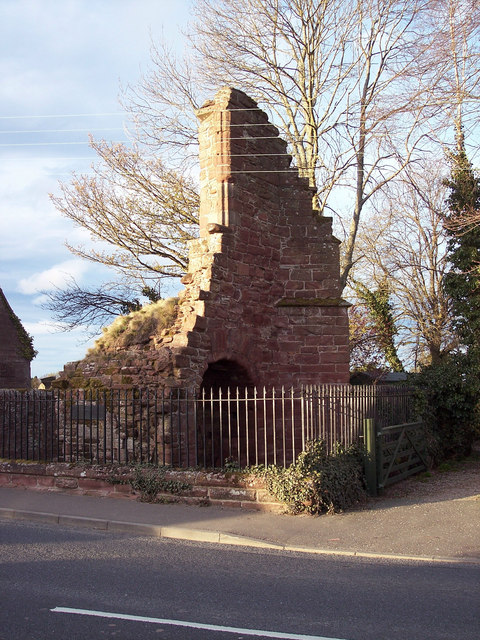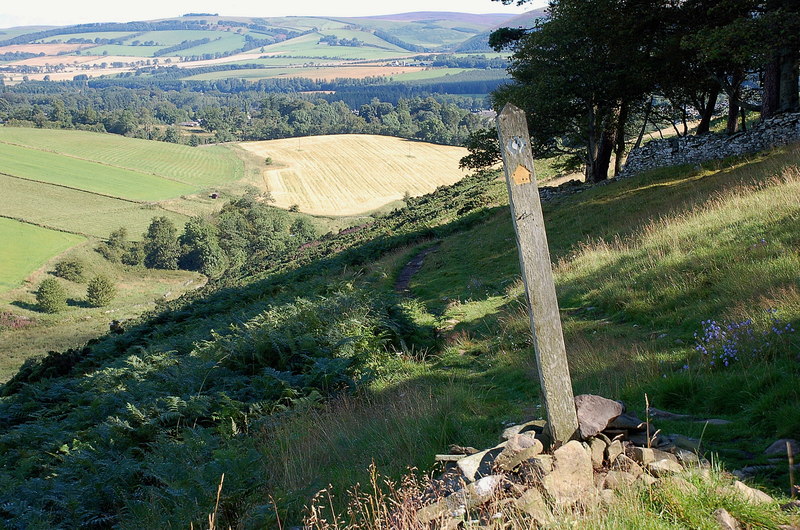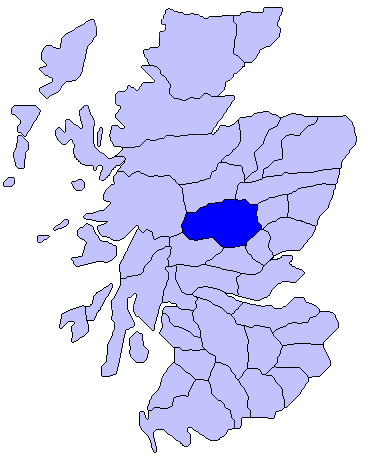|
Thomas Of Galloway
Thomas of Galloway, known in Gaelic sources as Tomás Mac Uchtraigh (died 1231), was a Gall-Gaidhil prince and adventurer. The son of Lochlann, king of Galloway, Thomas was an active agent of his brother Alan of Galloway as well as the English and Scottish kings. When King John, the English monarch, decided that central and western Ulster were to be added to his dominions (with the earldom of Ulster already created by John de Courcy), he conscripted Thomas and Alan of Galloway to his aid, offering them much of later counties Antrim, Londonderry and Tyrone as incentive. Thomas had begun his recorded career as a mercenary in Angevin service, and obtained much land in Ireland while gaining several victories with his fleet. In Scotland he obtained from William the Lion marriage to Isabella of Atholl, heiress to the province of Atholl in central Scotland. Although little is otherwise known about his life in Scotland, he was involved in the affairs of Coupar Angus Abbey, while ... [...More Info...] [...Related Items...] OR: [Wikipedia] [Google] [Baidu] |
Classical Gaelic
Classical Gaelic or Classical Irish () was a shared literary form of Gaelic that was in use by poets in Scotland and Ireland from the 13th century to the 18th century. Although the first written signs of Scottish Gaelic having diverged from Irish appear as far back as the 12th century annotations of the Book of Deer, Scottish Gaelic did not have a separate standardised form and did not appear in print on a significant scale until the 1767 translation of the New Testament into Scottish GaelicThomson (ed.), ''The Companion to Gaelic Scotland'' although John Carswell's ', an adaptation of John Knox's ''Book of Common Order'', was the first book printed in either Scottish or Irish Gaelic. Before that time the vernacular dialects of Ireland and Scotland were considered to belong to a single language and in late 12th century a highly formalized standard variant of that language had been created for the use in bardic poetry. The standard was created by medieval Gaelic poets based on ... [...More Info...] [...Related Items...] OR: [Wikipedia] [Google] [Baidu] |
John De Courcy
{{Infobox noble , image = Sir John de Courcy (1150-1219).jpg , caption = , alt = , more = no , succession = , reign = , predecessor = , successor = , suc-type = , spouse = Affrica Guðrøðardóttir , spouse-type = , issue = , issue-link = , issue-pipe = , full name = , native_name = , styles = , titles = , noble family = , house-type = , father = William de Courcy II , mother = Avice de Rumilly b.1096, Avice Fitz-Randolph de Meschin , birth_date = c.1150 , birth_place = Stogursey , christening_date = , christening_place = , death_date = September 1219 , death_place = , burial_date = , burial_place = , religion = Roman Catholic , occupation = Knight , memorials = ... [...More Info...] [...Related Items...] OR: [Wikipedia] [Google] [Baidu] |
Lauderdale
Lauderdale is the valley of the Leader Water (a tributary of the Tweed) in the Scottish Borders. It contains the town of Lauder, as well as Earlston. The valley is traversed from end to end by the A68 trunk road, which runs from Darlington to Edinburgh. Roman road Many ancient camps, and many ''tumuli'', are found in Lauderdale. The Roman road into Scotland, Dere Street, which means "the road into the country of the wild animals", crossed a ford at Newstead, near Melrose, where there had been a Roman fort and garrison, and entered Lauderdale. Dere Street is said to have been reconditioned by King Malcolm Canmore and probably used by him in his almost constant warfare against England. The Roman road has now been traced from the Tweed through Lauderdale to Soutra. Etymology Lauderdale's name comes from the town of Lauder rather than the Leader Water. The relationship between the names "Leader" and "Lauder" is very obscure; despite their similarity, they may have different orig ... [...More Info...] [...Related Items...] OR: [Wikipedia] [Google] [Baidu] |
Cunninghame
Cunninghame ( gd, Coineagan) is a former comital district of Scotland and also a district of the Strathclyde Region from 1975 to 1996. Historic Cunninghame The origin of the name (along with the surname ''Cunningham'') is uncertain. The ending ''-hame'' is Old English ("home, village"). The first component may be either Old English , ("king") or Gaelic ("rabbit"). Irvine, a former capital of Scotland, was the capital of Cunninghame, indicating its status as a royal burgh. The family crest includes the unicorn, which is restricted to the Crown, and Clans Cunningham, Oliphant, and Ramsay. The historic district of Cunninghame was bordered by the districts of Renfrew and Clydesdale to the north and east respectively, by the district of Kyle to the south over the River Irvine and by the Firth of Clyde to the west. Cunninghame became one of the three districts or bailieries of Ayrshire, the shire or sheriffdom of Ayr. Cunninghame was in the north, along the River Irvine; Kyl ... [...More Info...] [...Related Items...] OR: [Wikipedia] [Google] [Baidu] |
Anglo-Normans
The Anglo-Normans ( nrf, Anglo-Normaunds, ang, Engel-Norðmandisca) were the medieval ruling class in England, composed mainly of a combination of ethnic Normans, French, Anglo-Saxons, Flemings and Bretons, following the Norman conquest. A small number of Normans had earlier befriended future Anglo-Saxon king of England, Edward the Confessor, during his exile in his mother's homeland of Normandy in northern France. When he returned to England some of them went with him, and so there were Normans already settled in England prior to the conquest. Edward's successor, Harold Godwinson, was defeated by Duke William the Conqueror of Normandy at the Battle of Hastings, leading to William's accession to the English throne. The victorious Normans formed a ruling class in Britain, distinct from (although inter-marrying with) the native populations. Over time their language evolved from the continental Old Norman to the distinct Anglo-Norman language. Anglo-Normans quickly establishe ... [...More Info...] [...Related Items...] OR: [Wikipedia] [Google] [Baidu] |
Richard De Morville
Richard de Morville (died 1189), Lord of Cunninghame succeeded his father Hugh de Morville (died 1162) as Constable of Scotland and in his Scottish estates and English lands at Bozeat in Northamptonshire, and Rutland, as well as a number of feus of the Honour of Huntingdon. Around 1180 Richard de Morville, with the consent of his son William, granted liberty to the monks of Melrose to plough and sow the lands of Blainslie and the plain beyond the grove over to the Leader Water. This grant was confirmed by William de Morville, presumably his son. Based on the writings of cartographer Timothy Pont (who viewed the cartulary of Kilwinning Abbey), it was Richard de Morville who founded the Tironensian abbey of Kilwinning, Cunningham. Pont cites a date of 1191, but Richard de Morville was dead by then. Other sources claim dates of 1157, but this is likely confusion with his father's founding of Dryburgh Abbey. It has been suggested by historian Ian B. Cowan that the dates cited ar ... [...More Info...] [...Related Items...] OR: [Wikipedia] [Google] [Baidu] |
King Of The Gall-Gaidhil
The lords of Galloway consisted of a dynasty of heirs who were lords (or kings) and ladies who ruled over Galloway in southwest Scotland, mainly during the High Middle Ages. Many regions of Scotland, including Galloway and Moray, periodically had kings or subkings, similar to those in Ireland during the Middle Ages. The Scottish monarch was seen as being similar to a high king (''Ard-Righ'' in Gaelic). The lords of Galloway would have either paid tribute to the Scottish monarch, or at other times ignored him. The Lords of Galloway are fairly well recorded in the 12th and 13th centuries, but the records are incomplete or conflicting at other times. Later on, the kings were known as "lords" at the Scottish court, and "kings" at home, finally becoming "lords" in both arenas. The boundaries of the Kingdom of Galloway were ill-defined, and varied over time. During many periods Galloway was much larger than it is today, and took in parts of southern Ayrshire, such as Carrick, Upper ... [...More Info...] [...Related Items...] OR: [Wikipedia] [Google] [Baidu] |
Mormaer Of Atholl
The Mormaer or Earl of Atholl was the title of the holder of a medieval comital lordship straddling the highland province of Atholl (''Ath Fodhla''), now in northern Perthshire. Atholl is a special Mormaerdom, because a King of Atholl is reported from the Pictish period. The only other two Pictish kingdoms to be known from contemporary sources are Fortriu and Circinn. Indeed, the early 13th century document known to modern scholars as the ''de Situ Albanie'' repeats the claim that Atholl was an ancient Pictish kingdom. In the 11th century, the famous Crínán of Dunkeld may have performed the role of Mormaer. Royal connections continued with Máel Muire, who was the son of King Donnchad I, and the younger brother of Máel Coluim III mac Donnchada. Matad was perhaps the most famous of the Mormaers, fathering Harald Maddadsson, a notorious rebel of the Scottish King and perhaps the first Gael to rule Orkney as Earl of Orkney. The line of Máel Muire and Crínán came to an ... [...More Info...] [...Related Items...] OR: [Wikipedia] [Google] [Baidu] |
Meic Uilleim
__NOTOC__ The Meic Uilleim (MacWilliams) were the Gaelic descendants of William fitz Duncan, grandson of Máel Coluim mac Donnchada, king of Scots. They were excluded from the succession by the descendants of Máel Coluim's son David I during the 12th century and raised a number of rebellions to vindicate their claims to the Mormaerdom of Moray and perhaps to the rule of Scotland. Background William fitz Duncan himself appears to have been the acknowledged successor of Kings Alexander I and David I for part of their reigns. When David's son, Henry reached adulthood in the 1130s, William was replaced as heir apparent by Henry. In return, he appears to have been compensated with the extensive lands of Óengus, Mormaer of Moray, grandson of king Lulach, who was killed in battle against David I's general Edward the Constable in 1130. On William's death in 1147, his extensive lands in the south passed to his son by Alice de Rumilly, William of Egremont, while Moray was retained by the k ... [...More Info...] [...Related Items...] OR: [Wikipedia] [Google] [Baidu] |
Atholl
Atholl or Athole ( gd, Athall; Old Gaelic ''Athfhotla'') is a large historical division in the Scottish Highlands, bordering (in anti-clockwise order, from Northeast) Marr, Badenoch, Lochaber, Breadalbane, Strathearn, Perth, and Gowrie. Historically it was a Pictish kingdom, becoming one of the original provinces of the Kingdom of Alba before being incorporated into the sheriffdom and later county of Perthshire. Today it forms the northern part of Perth and Kinross, Scotland. Etymology In Scottish Gaelic the name is ''Athall'', which traditionally has been interpreted as deriving from the Old Irish ''Ath-fhotla'', or 'New Ireland' ( Fotla being a traditional name for Ireland). The explanation given for this relates to a conjectured Gaelic settlement of Scotland, which was previously inhabited by the Picts. James E. Fraser has called the "New Ireland" interpretation into question. On the basis of the early spelling ''Athochlach'', the first element has been proposed as rep ... [...More Info...] [...Related Items...] OR: [Wikipedia] [Google] [Baidu] |
William The Lion
William the Lion, sometimes styled William I and also known by the nickname Garbh, "the Rough"''Uilleam Garbh''; e.g. Annals of Ulster, s.a. 1214.6; Annals of Loch Cé, s.a. 1213.10. ( 1142 – 4 December 1214), reigned as King of Scots from 1165 to 1214. His 48-year-long reign was the second longest in Scottish history, and the longest for a Scottish monarch before the Union of the Crowns in 1603. Early life William was born around 1142, during the reign of his grandfather King David I of Scotland. His parents were the king's son Henry and Ada de Warenne. William was around 10 years old when his father died in 1152, making his elder brother Malcolm the heir apparent to their grandfather. From his father, William inherited the Earldom of Northumbria. David I died the next year, and William became heir presumptive to the new king, Malcolm IV. In 1157, William lost the Earldom of Northumbria to Henry II of England. Reign Malcolm IV did not live for long, and upon his death on 9 D ... [...More Info...] [...Related Items...] OR: [Wikipedia] [Google] [Baidu] |
Angevin Kings Of England
The Angevins (; "from County of Anjou, Anjou") were a royal house of French origin that ruled England in the 12th and early 13th centuries; its monarchs were Henry II of England, Henry II, Richard I of England, Richard I and John, King of England, John. In the 10 years from 1144, two successive count of Anjou, counts of Anjou in France, Geoffrey Plantagenet, Count of Anjou, Geoffrey and his son, the future Henry II, won control of a vast assemblage of lands in western Europe that would last for 80 years and would retrospectively be referred to as the Angevin Empire. As a political entity this was structurally different from the preceding House of Normandy, Norman and subsequent House of Plantagenet, Plantagenet realms. Geoffrey became Duke of Normandy in 1144 and died in 1151. In 1152, his heir, Henry, added Duchy of Aquitaine, Aquitaine by virtue of his marriage to Eleanor of Aquitaine. Henry also inherited the claim of his mother, Empress Matilda, the daughter of Henry I of Eng ... [...More Info...] [...Related Items...] OR: [Wikipedia] [Google] [Baidu] |



